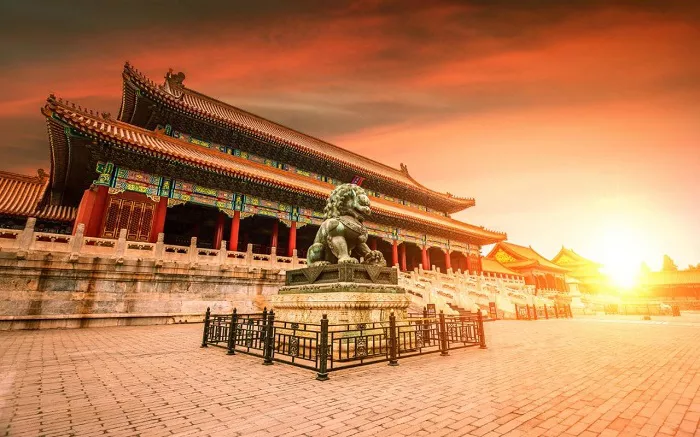Floral motifs from centuries-old artifacts housed in Beijing’s Palace Museum have been reimagined in a modern form — commemorative postage stamps — as part of a collaboration with the United Nations Postal Administration (UNPA). Marking both the museum’s centenary and International Museum Day, the UNPA has issued a special event sheet of 10 stamps, each valued at $1.65. This marks the first instance of the UNPA releasing a commemorative stamp sheet dedicated solely to a single museum.
Each stamp showcases a flower-inspired design drawn from artifacts or architecture within the Palace Museum, formerly known as the Forbidden City. Highlights include a crab apple blossom derived from an album by Qing Dynasty court painter Yu Zhi and a red narcissus design adapted from a Yuan Dynasty plate. The interleaving sheet beneath the stamps features a depiction of the Gate of Divine Prowess (Shenwu Men), rendered in the palace’s iconic red.
Wu Di, head of the museum’s cultural and creative products department, said only 16,800 sets of the stamps have been issued. While a small number are being sold at the Palace Museum’s cultural store for 698 yuan (approximately $96.90), most sets will be distributed internationally.
The floral theme, according to Wu, symbolizes the vibrancy and diversity of traditional Chinese culture and its aspiration for global cultural resonance. “Stamps, as tiny cultural ambassadors, can convey such beautiful meanings,” he said.
Among the featured designs is the baoxiang hua — a fictional, hybrid flower combining elements of peonies, chrysanthemums, and lotuses. This motif is found on the Jin’ou Yonggu Cup, an imperial wine vessel used during New Year rituals. The cup’s 36 baoxiang hua represent the days of a complete lunar year, symbolizing peace and prosperity.
Wu noted that designing the stamps presented considerable artistic challenges. Two designers spent several months refining the visuals, striving to faithfully capture the vivid colors and intricate patterns of the original artifacts within the limited space of a stamp.
“The Palace Museum’s collections are extraordinary — diverse in variety, exceptional in quality, and immense in historical and social value,” Wu said, emphasizing the difficulty and excitement of selecting artifacts from among over 20,000 creative products already developed by the museum.
The stamp launch was held at the UN Headquarters in New York on May 19, accompanied by an exhibition that drew over 120 ambassadors and representatives from UN agencies. The event highlighted museums’ evolving role in safeguarding cultural heritage and promoting global dialogue.
Deputy Director of the Palace Museum Wang Yuegong said the institution remains focused on artifact preservation and the exploration of cultural meaning, with an aim to transform the 600-year-old Forbidden City into a force for international cultural exchange.
The exhibition drew inspiration from the I Ching (Book of Changes), particularly the idea of “mutual growth and endless continuity.” It also spotlighted the Palace Museum’s initiatives in accessibility, rural development, and environmental sustainability. Among the items on display were silk scarves and bags, some made from recycled materials such as plastic bottles.
Wu noted the museum’s growing emphasis on inclusivity. In December, it opened a specialized hall to enhance accessibility for visitors with disabilities, offering interactive experiences that engage touch, sound, and scent to bring cultural relics to life.
A lifelong philatelist from China’s Liaoning province, Wu previously contributed to the Palace Museum’s zodiac-themed stamp series. The Year of the Rabbit set featured Tu’er Ye, a mythological rabbit figure dressed in traditional military garb, designed by the late Zhang Chang — a Tsinghua University professor and fourth-generation inheritor of the Niren Zhang family of clay figurine artisans. Zhang passed away before completing the project, leaving a poignant legacy to the collection.
The Palace Museum’s foray into postage stamp design underscores the enduring global appeal of Chinese cultural heritage and the innovative pathways through which it continues to be shared.

